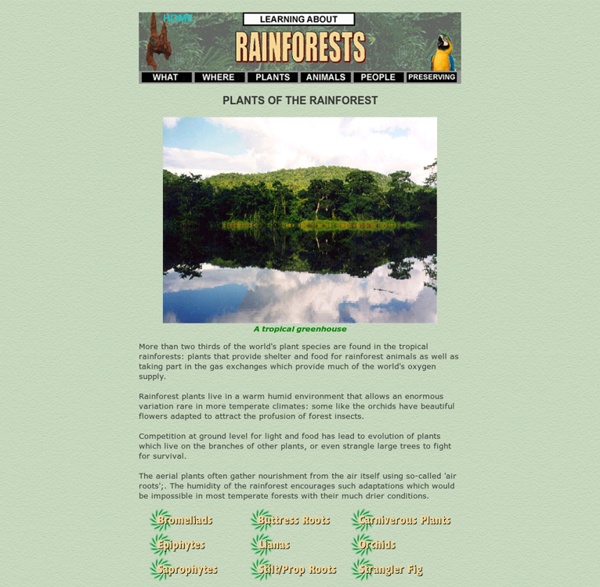Helpful Plants
Tropical Rainforest Resources Edible Rainforest Plants Allspice: (Pimenta dioica) Berries-- shaped like peppercorns-- of an evergreen tree which can grow up to 100' in height in height in the Latin American Rainforest. The small, aromatic fruits have a subtle flavor like a mixture of clove, cinnamon, and nutmeg, hence the name "allspice." Banana: (Musa paradisiaca) This is the most common Musa, but there are 21 species and subspecies which are edible. Black Pepper: (Piper nigrum) A vine native to the East Indies. Caspicum annum: Cayenne pepper, sweet pepper, paprika, and jalapenos are just four of the many cultivars of this plant. Cardamom: (Elleteria cardamom) Native to India, the third most expensive spice after saffron and vanilla. Cashews: (Anarcardium occidental) Originally from Tropical America, a valuable nut and vitamin rich fruit from the tree. Chocolate/Cocoa: (Theobroma cacao) Native to lowland tropical America, probably first domesticated in Mexico. Cinnamon: (Cinnamomum zeylanicum)
Rare Plant
The rain forests of the world are estimated by scientists to contain 80% of the green flowering plants in existence and it is estimated that 2.5 acres of tropical rainforest may contain more than 750 types of trees and 1500 species of higher plants. With the loss of each acre of rainforest to farming, logging or other form s of development, hundreds of species disappear forever. Orchids: There are over 25,000 different types of orchids, and many are them are threatened, endangered or extinct. Orchids range in size from microscopic to several feet tall and the bloom can be larger than a human hand. A tragic phase in the history of orchids was during the 1800's, when many European aristocrats began collecting them. CITIES List of Endangered Orchids Orchid Photos Rafflesia Flower This incredible flower, found primarily in the shady lowland tropical forests of Indonesia, has by far the largest bloom of any flower and is one of the world's rarest and most endangered plants.
Ten Amazing Rainforest Plants
Our surroundings are sometimes taken for granted. Even something as unique as the rainforest is forgotten. It seems a little bit of knowledge and a shove in the right direction can get people to appreciate the environment. So, why not start with the wonder that is the rainforest? Even though rainforests only cover less than two percent of the Earth’s entire surface area, they are home to 50 percent of the plants and animals. You’re probably thinking “I know all there is to know about bananas; I eat them for breakfast and can make delicious banana bread.” Habitation: Found in Central America, South America, Africa, Southeast Asia and non-tropical regions like the United States thanks to modern agricultural technologies. Known for their beauty, orchids are the largest family of plants in the world. Habitation: Extremely adaptable and grows in most climates with the majority being found in Central America, South America and in countries along the Andes Mountains.
Medical Plants
Rainforest Remedies Daniel Mowrey, Ph.D. Undiscovered Riches The number of potentially useful medicinal plants growing in the world's rainforests is estimated to be in the thousands. As much as we would like to see immediate results from rainforest exploration, the rule of thumb must be to go slowly. The only currently obvious trend in rainforest development is the phenomenon of drug companies rushing to South America and South Pacific Islands, usually under sponsorship of the National Cancer Institute, in search of novel compounds. Meanwhile, left to his own devices, the indigenous peoples of the rainforest and other 'uncivilized' places on the earth seem to do just fine utilizing methods passed down from generation to generation in accordance with a great variety of ingenious religious, social and medical customs. Some of the following herbs you may have heard of and others I am sure you have never heard of. Lapacho (Tabebuia avellandedae, and T. impetiginosa). Papaya (Carica papaya).



